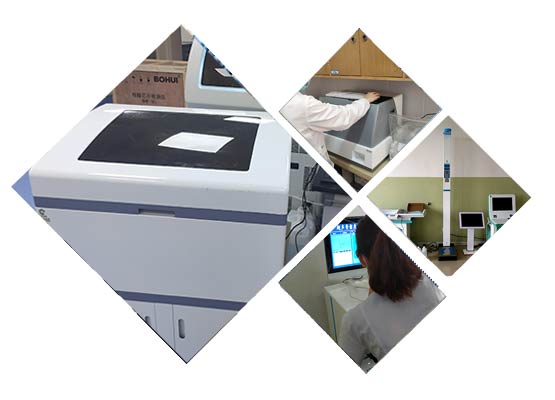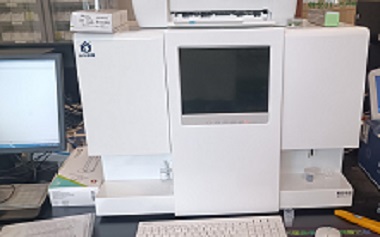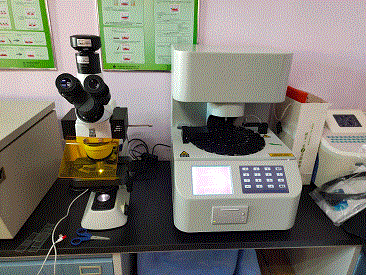咨询QQ:386074237
咨询热线:13626329298
具有一流的企业管理、技术创新和销售服务团队
好公司,好产品,好服务,好政策

国康微量元素分析仪、超声骨密度仪、中医体质辨识仪、阴道分泌物检测仪、尿碘检测仪、真菌荧光染色剂厂家,国产医疗设备生产厂家,专业老品牌
国康骨密度仪厂家拥有强大的研发能力,与国内外微量元素分析仪、母乳分析仪、阴道分泌物检测仪、尿碘检测仪、真菌荧光染色剂科研生产厂家有着广泛合作。

中医体质辨识仪、白带分析仪、尿碘检测仪、阴道分泌物检测仪、儿童智力测试仪设备广泛应用于医院、体检科、保健科、疾控中心、卫生服务站等
全自动微量元素分析仪、骨密度仪品牌、全自动母乳分析仪、阴道分泌物检测仪、尿碘检测仪、中医体质辨识仪专业的售后服务团队,售后服务工程师上门指导安装,买的放心,用的安心
用心服务好每一个客户

信息时代,我们将实时更新微量元素分析仪、母乳分析仪、阴道分泌物检测仪、尿碘检测仪设备、真菌荧光染色剂资讯
 国产微量元素分析仪厂家品牌选择哪个好?山东国康不容错过
国产微量元素分析仪厂家品牌选择哪个好?山东国康不容错过
微量元素全自动操作更方便,试剂自动吸入、自动搅拌、自动测定、自动排废液、自动清洗、自动定标、自动校准…
查看详情> 中医体质辨识仪测评结果可信吗?根据《中医体质分类与判定》标准辨识
中医体质辨识仪测评结果可信吗?根据《中医体质分类与判定》标准辨识
依据中华中医药学会颁发的《中医体质分类与判定》标准,是在中医体质理论指导下,利用信息化的技术,根据量表设计原理,以问询录入的方式,采集居民健康信息…
查看详情> 妇科阴道分泌物检测仪化学反应法检测检测多种女性白带炎症
妇科阴道分泌物检测仪化学反应法检测检测多种女性白带炎症
通过对阴道分泌物的检测,区分细菌性阴道炎、霉菌性阴道炎或滴虫性阴道炎,为临床用药提供准确有效的指导…
查看详情>用于定性组织学染色,对福尔马林固定、石蜡包埋组织中的真菌和真菌细胞壁中的多糖染色。…
免疫荧光染色技术一般用于细菌、病毒微生物的快速诊断以及肾脏穿刺活检、皮肤活检等病理诊断领域…
查女性妇科生殖系统的致病菌,如细菌、病毒等微生物,另外妇科内分泌疾病,免疫疾病等,也需要免疫荧光检查…
操作简单、敏感性高、结果报告快速、检出率高的优点,显微镜下真菌菌丝和孢子形态清晰,使用范围广等。…
是一种快速检测真菌感染的新型染色液。试剂中的荧光染料与真菌细胞壁几丁质、纤维素结合而将真菌染色,在紫外光的激发下,显现强荧光。…
适用于皮屑、甲屑、毛发、尿液、痰液、胸水、肺泡灌洗液等各种标本。…
真菌免疫荧光染色诊断是查是否存在真菌感染疾病。…
皮肤真菌荧光检测需要通过皮肤镜检查、真菌培养、真菌荧光染色、血清学检查、组织病理学检查等方式进行检测,有助于医生更好地为患者制定治疗方案。…
真菌病感染顽固,容易导致误诊误治,因此在临床工作中加强对真菌病的检测更为重要。…
真菌荧光检测是利用真菌荧光染色液对人体各种标本中是否存在真菌感染而采取的一种检测方式。…
通过不断的研发和创新,不断提高产品的质量和便利性。可以更快更准确地进行真菌感染的诊断,为患者提供更好的治疗方案。…
真菌荧光检测是利用真菌荧光染色液对人体各种标本中是否存在真菌感染而采取的一种检测方式…
价格对比其他品牌而言更具有优势,同时其产品质量和专业服务也得到了科研人员的认可和好评…
通过免疫标记和荧光原理能够快速检测人体各类组织标本中存在的真菌…
真菌荧光染色液是一种快速检测真菌感染的新型染色液。试剂中的荧光染料与真菌细胞壁几丁质、纤维素结合而将真菌染色,在紫外光的激发下,显现强荧光。通过荧光显…
真菌病根据感染层面分为:浅表、皮下和全身,浅表真菌感染在临床皮肤病中最常见。浅表真菌病涉及表皮、毛发和甲的感染,由小孢子菌发癣菌念珠菌和马拉色菌感染引…
真菌免疫荧光染色是将荧光素和抗体合成荧光抗体,然后与待测样品中的抗原反应。具有发现真菌和确定真菌类型的功能。…
妇科免疫荧光染色诊断是查引起生殖系统器质性疾病的病原体的,可以明确是否有细菌、病毒、支原体等各种病原体感染,检测结果相对较准确…
让你轻松找到真菌,还能让你更好地了解真菌的分布情况。…
真菌荧光染色液性能优异。其独特的配方和准确的比例使染色液在样品中反应迅速,产生明亮清晰的荧光信号。…